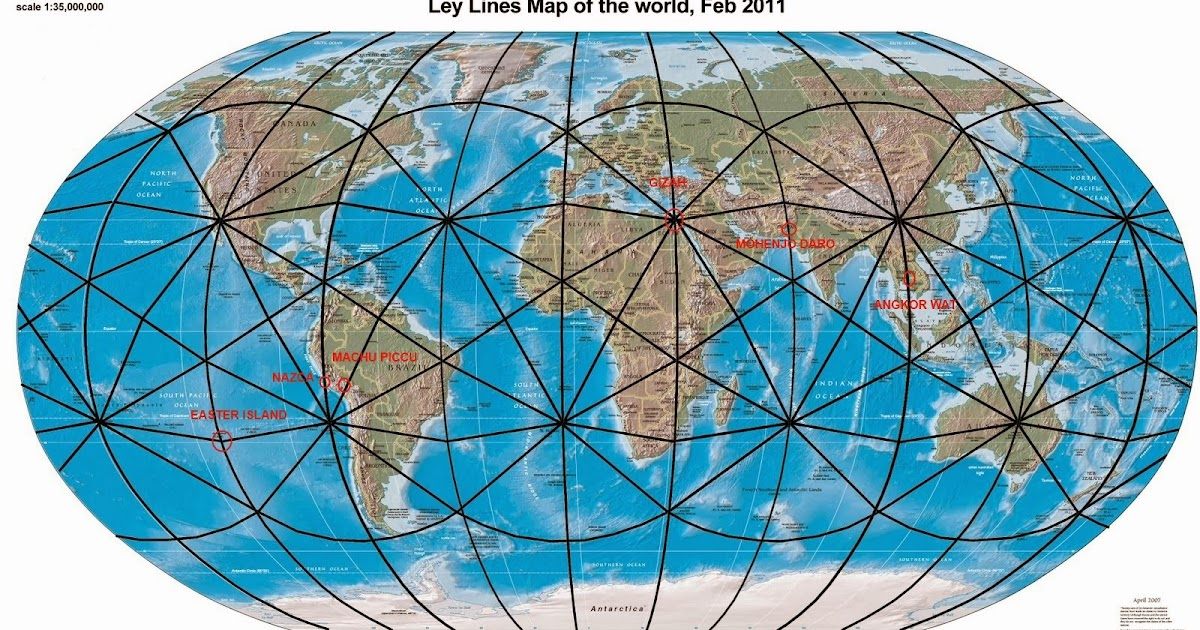Many people throughout the world believe in things they can’t see. Whether it’s unseen gods, chance, or fate, these supernatural forces continue to have an impact on people all the way up to the fabric of society.

The existence of ley lines is one such belief in the unseen, with unexpectedly convincing evidence. These secret roads create a grid throughout the Earth, linking sacred sites in a network of straight lines that spans the entire globe.
In this sense, ley lines are unexpectedly inclusive, linking sacred and important ancient worship places throughout the world. The Egyptian Pyramids, the Great Wall of China, Stonehenge, and other landmarks have been discovered to be located on ley lines.
Given the lack of coordinated communication among the civilizations that erected these monuments, this presents a conundrum. Is it feasible that the ancient people were aware of ground energies when they chose their sacred sites? Is it conceivable that they felt the Earth’s energies were greater along these ley lines?
Is this simply a case of confirmation bias, where researchers have drawn so many straight lines on the map that random chance is confused with significance?
The theory of Ley Lines

Given the locations mentioned, the notion of ley lines is relatively new, having been originally postulated in full in 1921. Since then, the topic has never been resolved, and the dispute over whether they exist or not has raged on.
Indeed, many proponents of ley lines admit to not fully comprehending its purpose. Most people believe that these lines indicate places of natural power, with intersections being especially effective. However, how this emerges and how it might be beneficial remain a mystery.
Alfred Watkins, an archaeologist, made a controversial remark in 1921. Watkins asserted that hundreds of prominent ancient sites located all over the world can be demonstrated to have been built in a succession of straight lines.
Whether the locations were man-made or natural, they always fell into this pattern, which he referred to as “ley lines.” With this notion, he developed the idea that some natural force from the Earth was manifesting itself in the location of these features.
These lines, like longitude and latitude lines, span the world. Natural structures, monuments, and even rivers follow these patterns and are thus seen to be endowed with supernatural energy.
Example

Alfred Watkins provided proof for his theory by displaying several sorts of monuments in a straight line around the world. He drew a straight line across southern England, and then one from the southern point of Ireland to Israel, claiming to connect seven separate locales with the name “Michael” in some form. It was dubbed the “St. Michaels Ley Line.”
Similarly, many structures that appear to be substantial do not appear on these lines and are therefore ignored. Since 1921, many people have questioned the notion due to unresolved issues. Many academics feel that these alignments are simply fortuitous overlaps, akin to seeing people or animals in clouds.
Many aficionados of the occult and science fiction, however, believe in the reality of ley lines. Furthermore, while this notion has yet to be realistically proven or disproven, the discovered evidence and connecting lines throughout the maps may still indicate its existence.
A practical application?

One of the most practical notions concerning ley lines is that they may be used for navigation. They have been postulated as a tool that early British (ley lines were originally a British notion) travelers may use to securely navigate themselves to their destination.
An early overland navigator would have marked a distant high point, such as a mountain, monument, or other noteworthy feature, and used it as a landmark to steer towards. Intervening sites would be constructed along this route, giving the impression of a concealed passage.
There are now bits of evidence pointing to the existence of such trackways in the United Kingdom. Not only that, but these trackways connect locations of direct interest to travelers, such as water springs, churches, and castles. However, one typical critique of ley lines is that, because there are so many given places on an Earth map, a straight line may be traced across either of the two points in some sequence.
Alfred Watkins agreed with this premise, but he felt that the chosen paths were already in place and that early navigation was led by supernatural influences. He also recognized the similarity of alignment in ritually significant sites.
Watkins’ theory was based on the ideas of astronomer Norman Lockyer. Lockyer had examined the alignments of ancient European monumental buildings at places such as Stonehenge, attempting to discover the old monuments’ astrological link.
Unknown and unproven

The majority of articles and books connected to Watkins’ notion of ley lines that have been published so far across the world reject and condemn the supernatural part of his views. However, this notion has captured the interest of the contemporary era and counterculture movements.
Many people, who are dissatisfied with science’s explanations for the cosmos, think that these unexplained lines contain spiritual enlightenment, energy fields, and cosmic power. What this implies, and what influence it may have, has yet to be determined.
Are these just established pathways across the countryside followed by early explorers? Is it possible that they are genuine, or merely a coincidence of constructions? Many people still believe in the power of ley lines, and for the time being, all that can be stated is that nothing has been proven in either direction.



